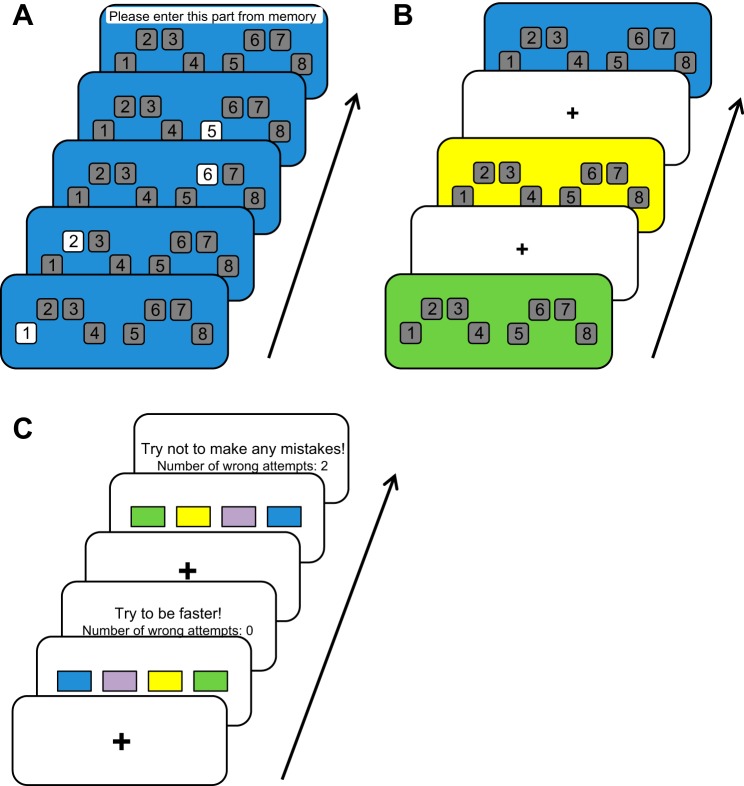Fig. 1.
Training and testing tasks. During training, participants practiced each subsequence separately. A: in the initial training phase participants saw eight gray boxes representing the response keys for the little to index finger of the left hand (boxes 1–4) and for the index to little finger of the right hand (boxes 5–8). Each subsequence corresponded to a different color that was represented by the background color of the screen (blue, purple, green, or yellow.) The sequence order was indicated by the order in which the boxes lit up white. Participants responded to the lit-up boxes by pressing the corresponding key. Each subsequence was four key-presses long. After three repetitions of responding to the lit-up boxes of a subsequence participants had to type it once from memory. B: in the second training phase, participants had to type the subsequence corresponding to each background color from memory. The subsequences were presented in random order. C: during testing, participants first saw a fixation cross, followed by the sequence cue consisting of four horizontally aligned rectangles. The colors of the rectangles corresponded to the previously memorized subsequences and had to be concatenated from left to right. No feedback was provided during sequence performance, but errors caused the trial to be aborted and wrong trials had to be repeated until they were error-free. Correct trials were followed by performance feedback showing the number of incorrect attempts and either an encouragement not to make any mistakes (if they had incorrect attempts), to be faster (if they had no incorrect attempts, but were slower than the mean +2 SD of their previous three trials), or a “Well done!” message. The sequence order (i.e., the order of the colored rectangles) varied pseudorandomly between trials. There were 8 blocks, each containing 21 trials.

